Science For Monastics 2011
What is Science?
The Exploratorium was founded as a museum of science, art, and human perception.
Observation is an important part of science and yet it is seldom taught in science courses. Many examples of poor science arise because people honestly report what they see, and yet their reports are flawed because they do not understand how their visual system can be fooled. Understanding perception is necessary to help us understand how there can be so many incorrect pseudoscientific reports in the media.
The workshop was at the Deer Park Institute, Bir India. At the base of the foothills of the himalaya.
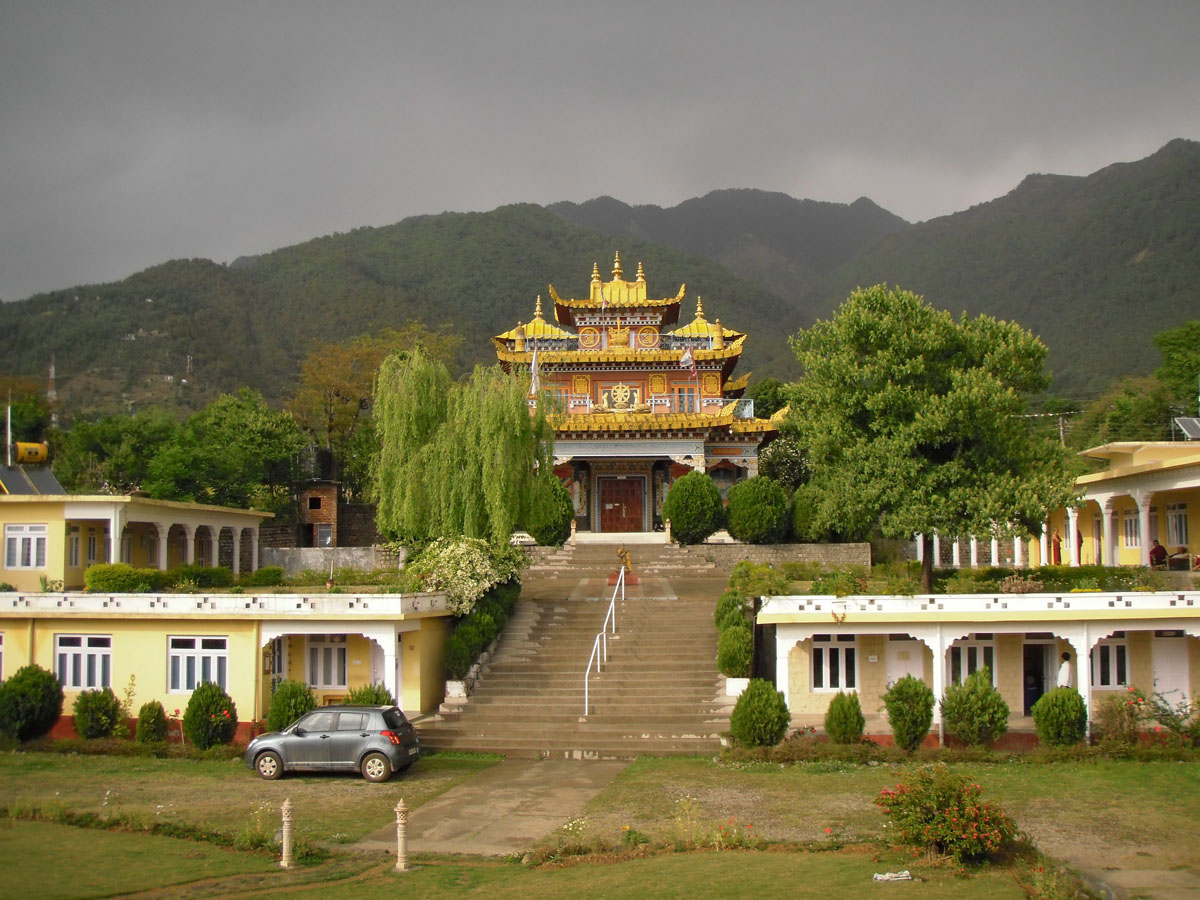
Perception
Day 1 Monday
Modesto Morning
Sound Cups Two cups taped together contain objects, the monks try to match their cup sound with the sound of another cup, to find their partner.
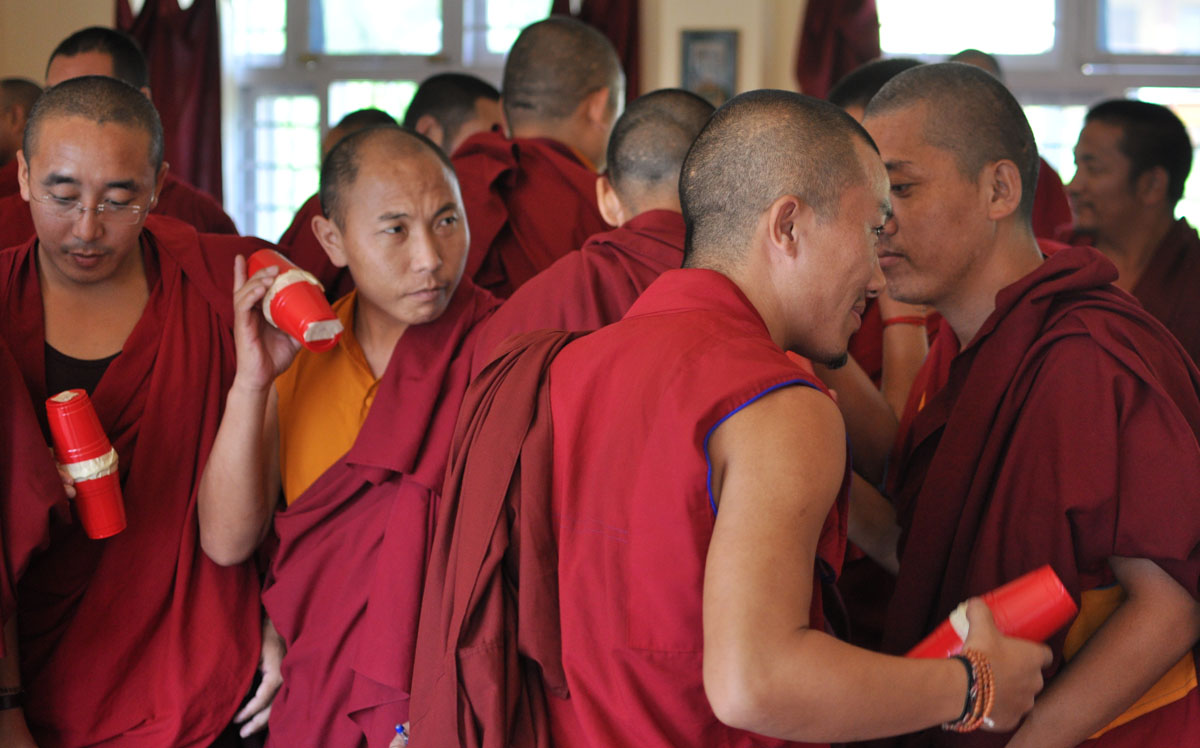
Sensitivity of the Ear Monks drop a piece of paper into a cup held over the ear of another monk, the paper is made smaller and smaller to probe the limits of the sensitivity of the ear.
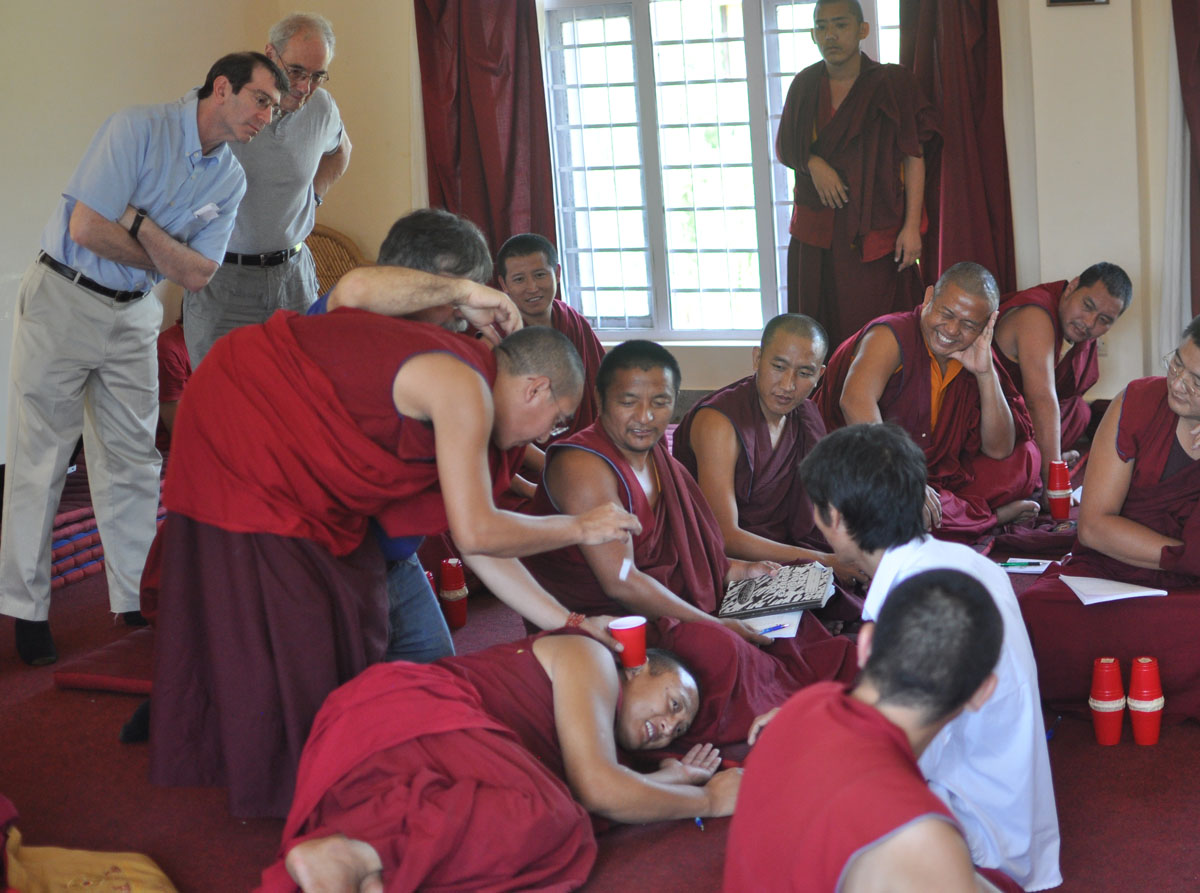
Paul Afternoon
String Crossing Stretch a string from your nose to an extended hand. What do you see?
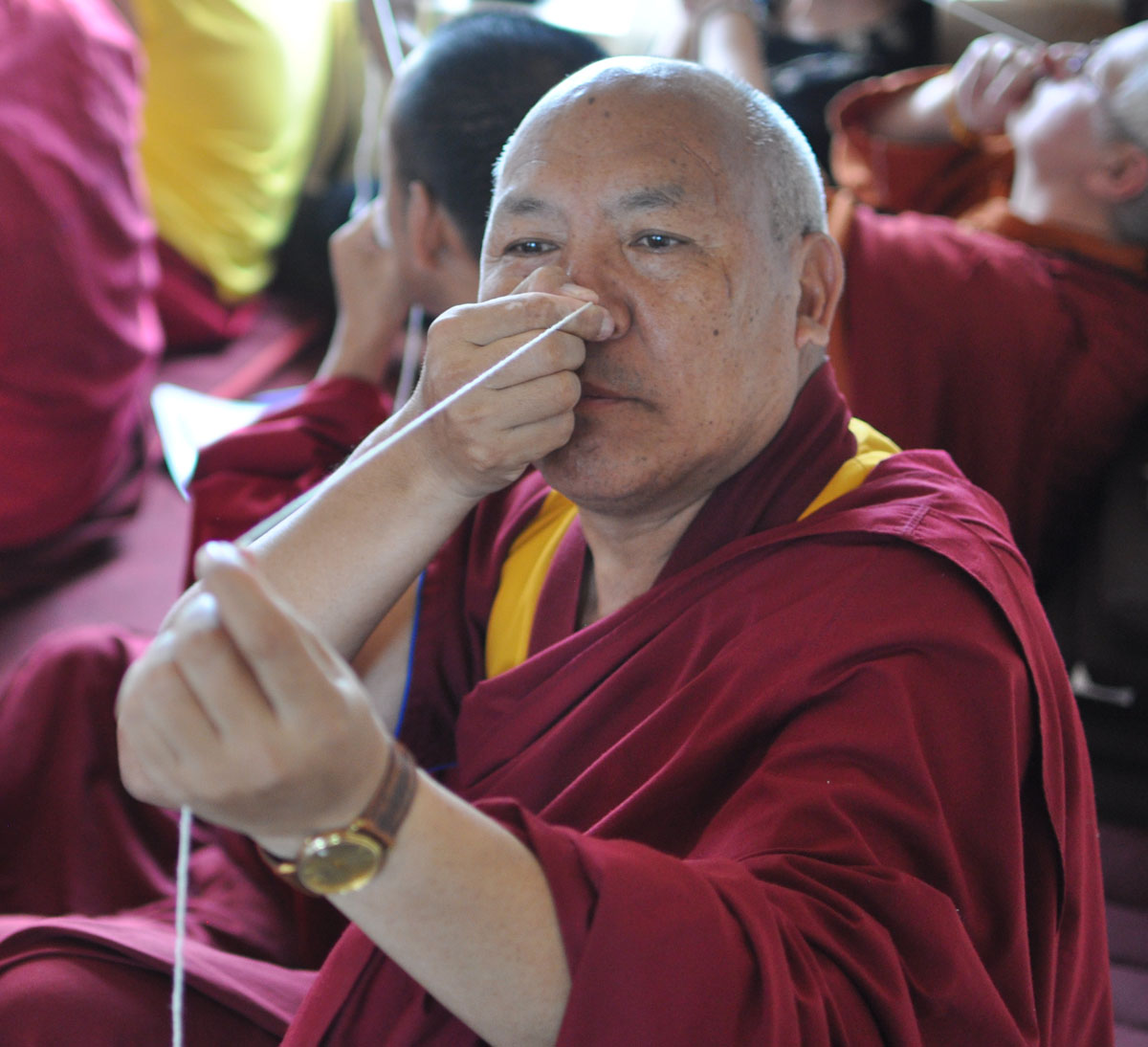
Laser Speckle Illuminate a wall with an expanded laser beam , or a candle, or a frosted lightbulb with an unexpanded beam. Notice how the speckles move.
Master Eye, Many people have a master eye, circle a distant object with your finger and thumb then bring the circle toward your face to find your master eye.
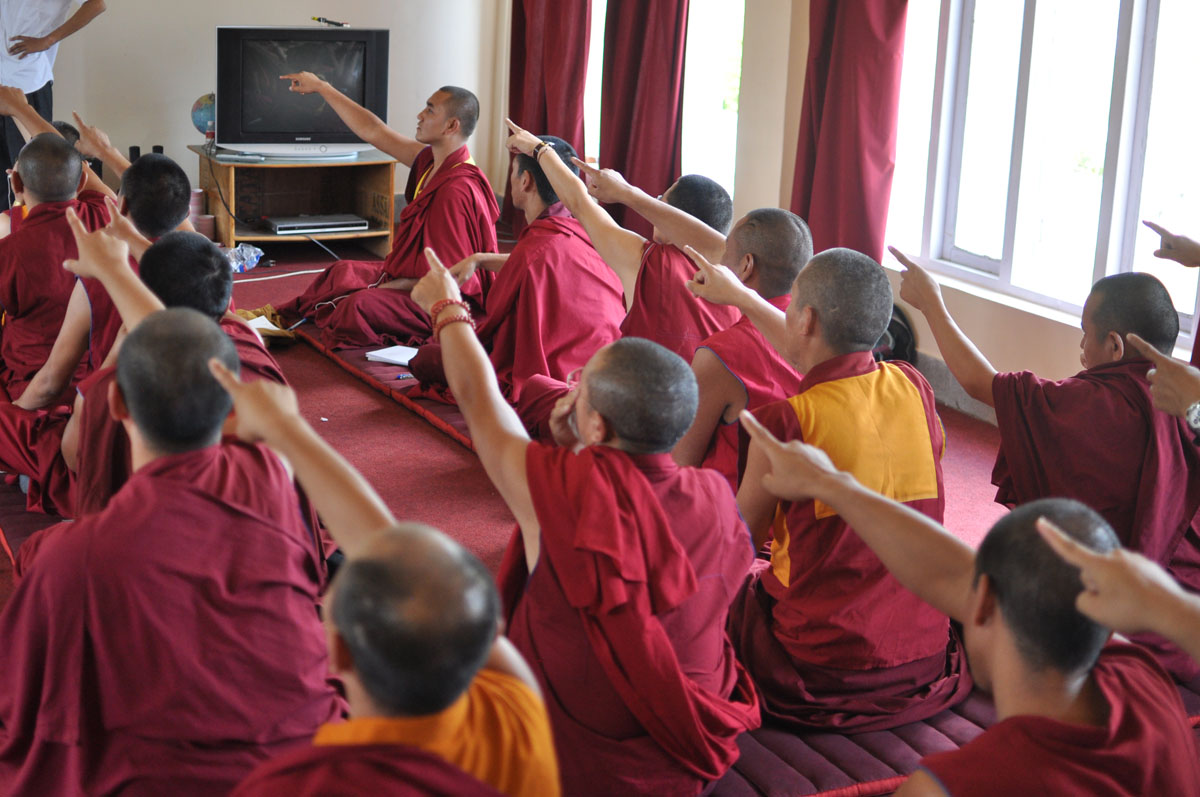
Day 2 Tuesday afternoon Modesto
Feel temperature In a group of people, shake hands and line up by hand temperature.

Investigate an Apple Write down all the words you can think of to describe a real apple. Then cross out the words that no longer apply to a plastic apple, then a photo of the apple, then the word apple. This shows the importance of using the real phenomena in science learning.
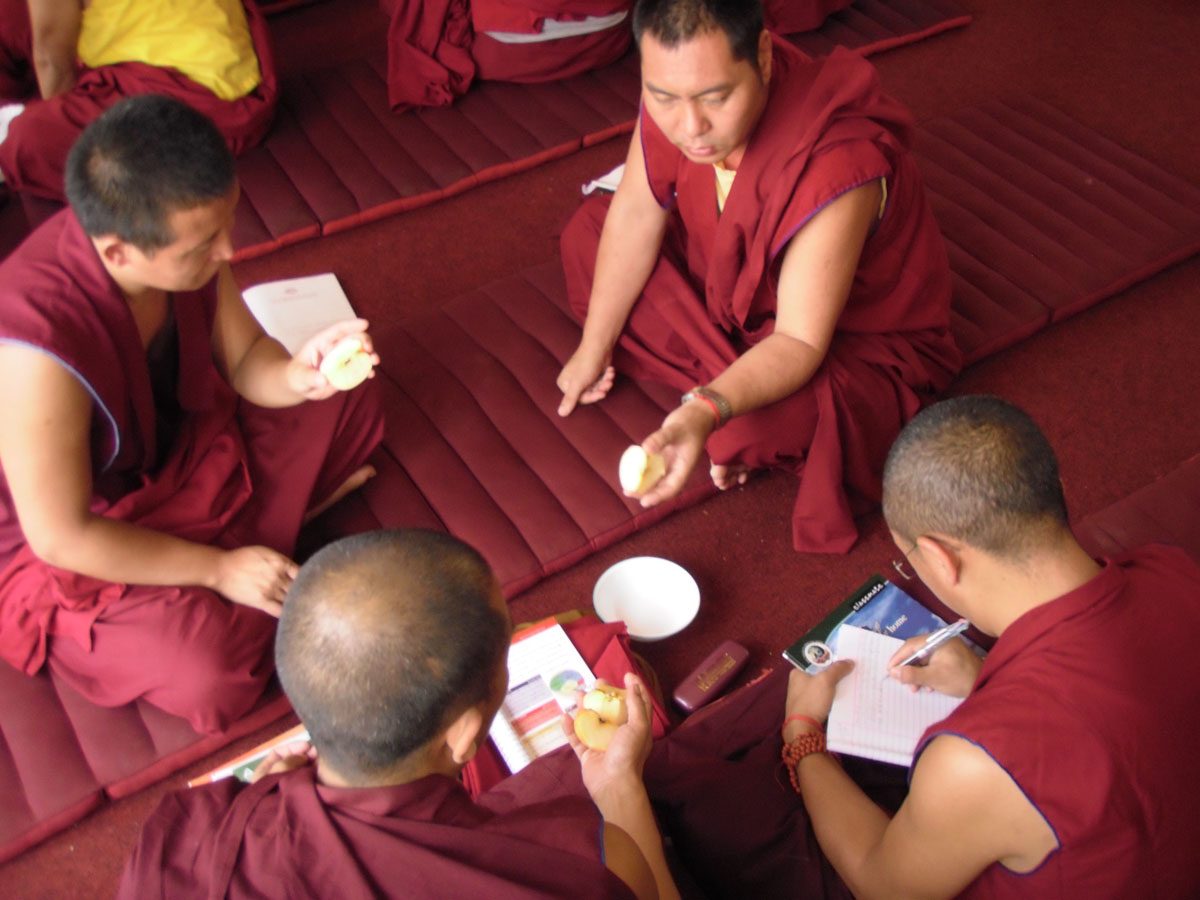
Night Class Paul
Locating Rays Observe a small point of light, notice the rays spreading out from it. Locate the rays!
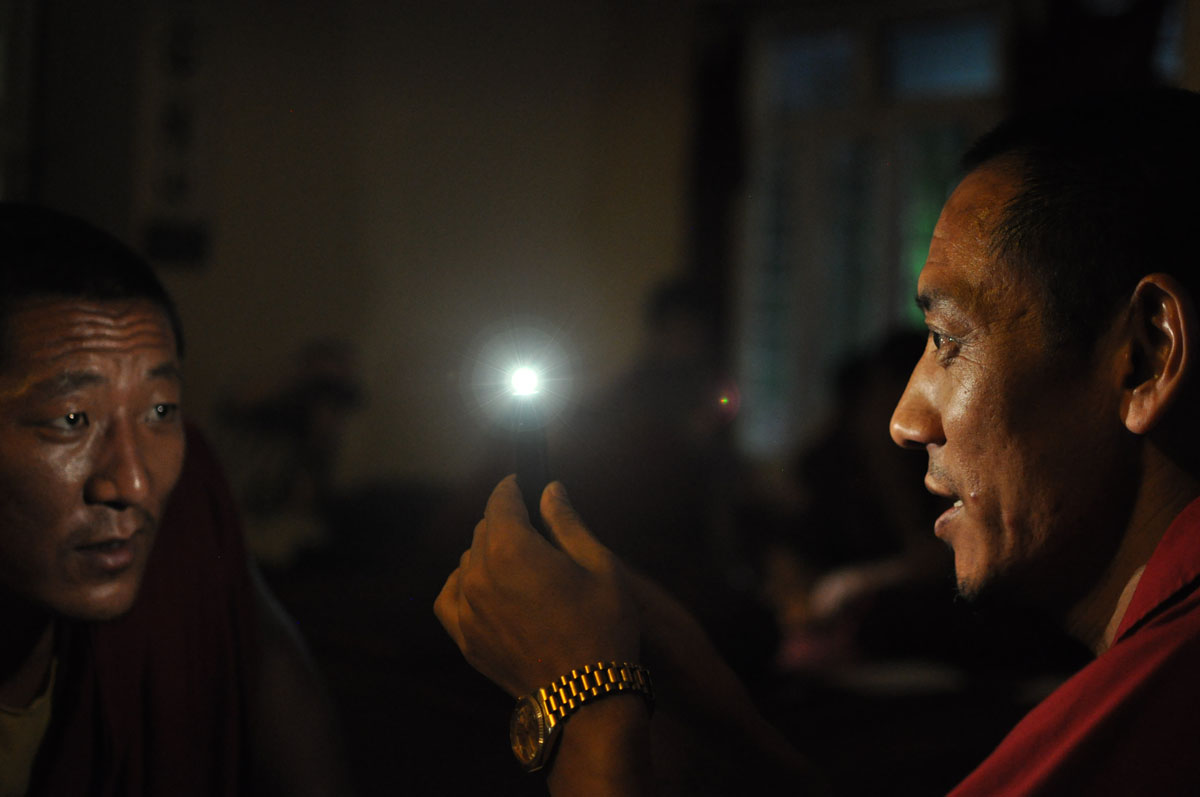
Measure the rotation of the earth. Observe stars from one night to the next as they pass behind a power line. Measure the time it takes them to pass behind the line. In Bir on Monday evening I timed a star crossing behind a powerline at 20:44:15 hrs. The next night it crossed the powerline at 10:40:14. The time difference is 23 hours and 56 minutes.
Wednesday
Modesto
Mirror walk Hold a mirror horizontally under your eyes and walk. when you try to enter a room you see a barrier.
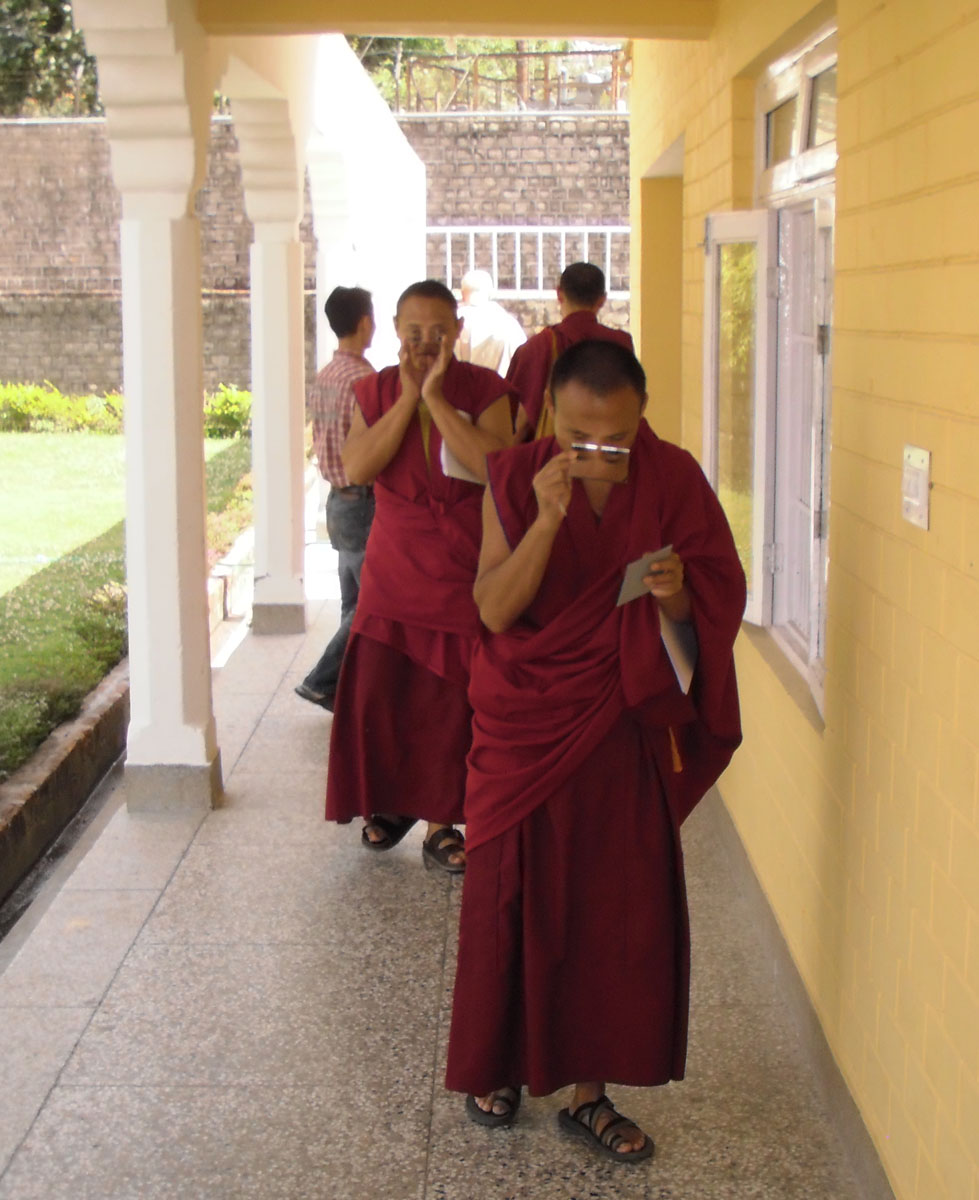
Mirror Symmetry Draw half an image use a mirror to make it a full image.
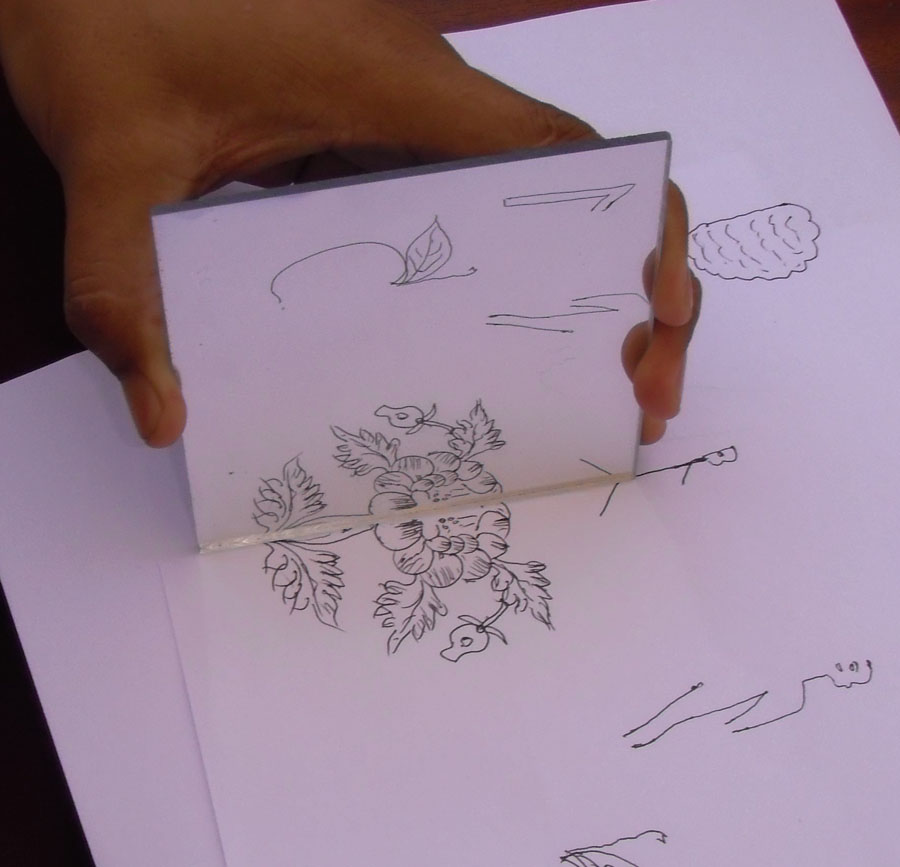
Gray Step Observe a card with two gray squares. They are not what they appear to be.
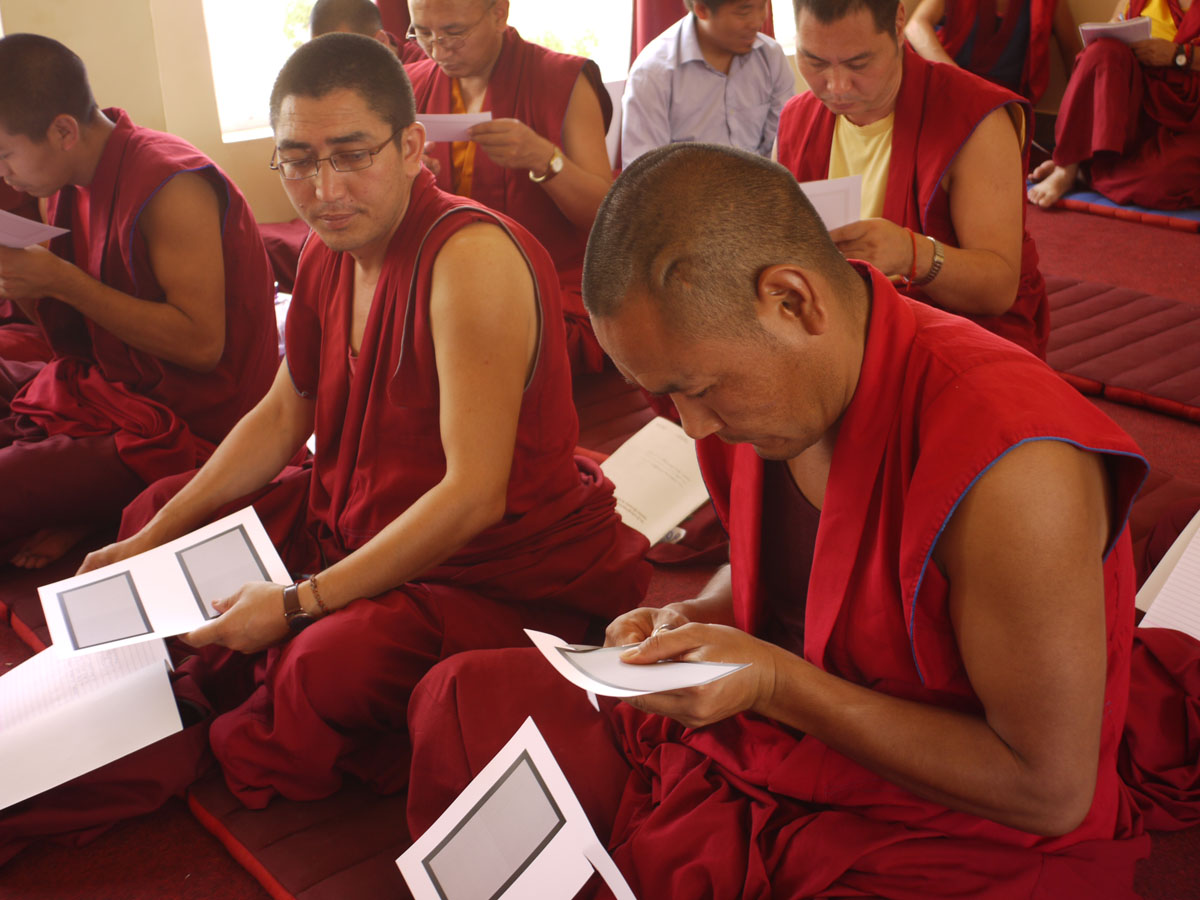
Gray step card Print this out on a printer that can make 1200 dots per inch or greater.
Afterimage Use a small bright points of ight to make afterimages.
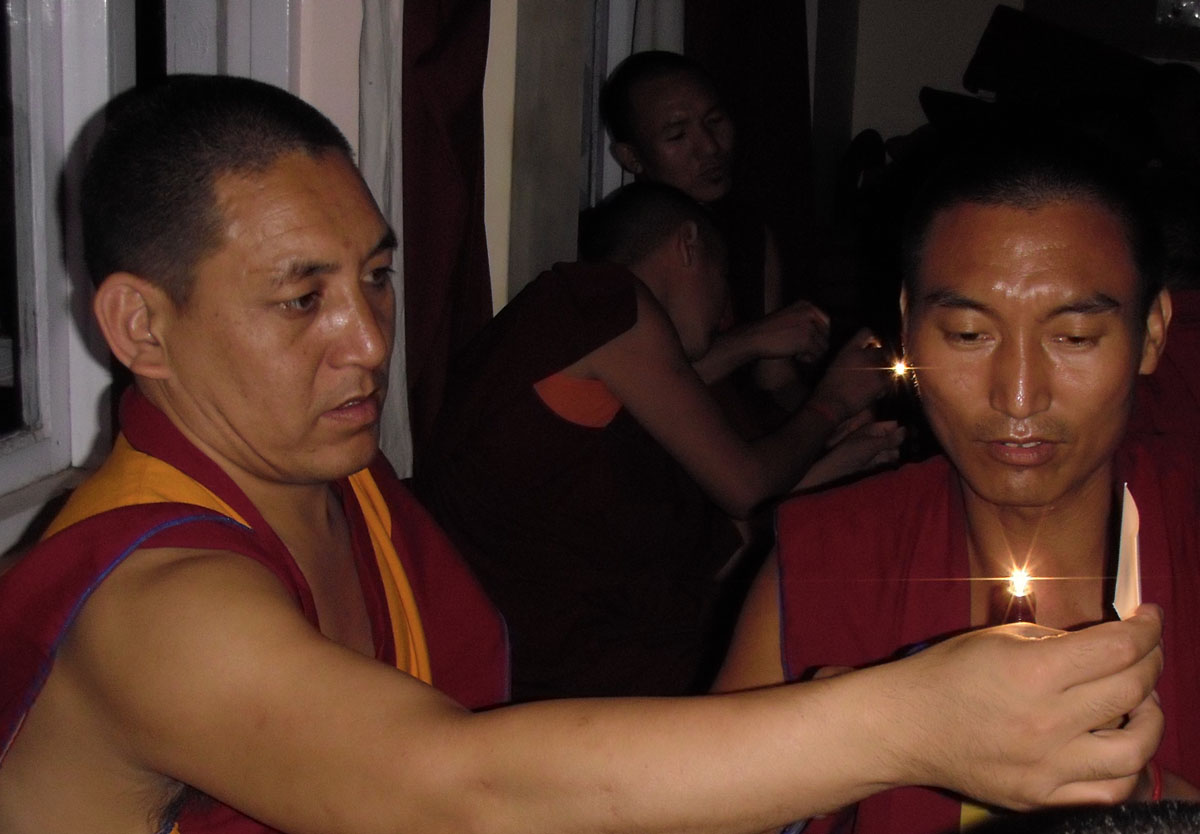
Thursday
Morning Modesto
Cheshire Cat
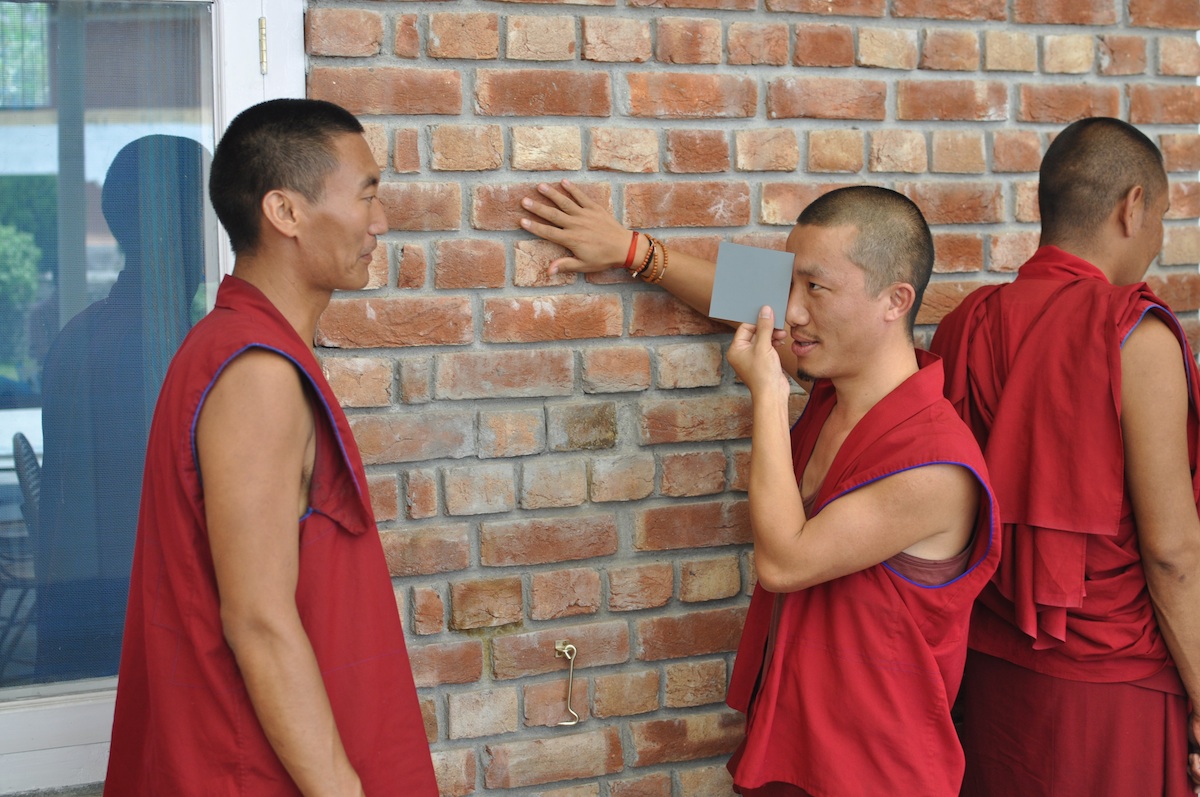
Peripheral vision. Start with thumbs in front of you and move them to the sde until they vanish. When they vanish, wiggle them and you can see them again.
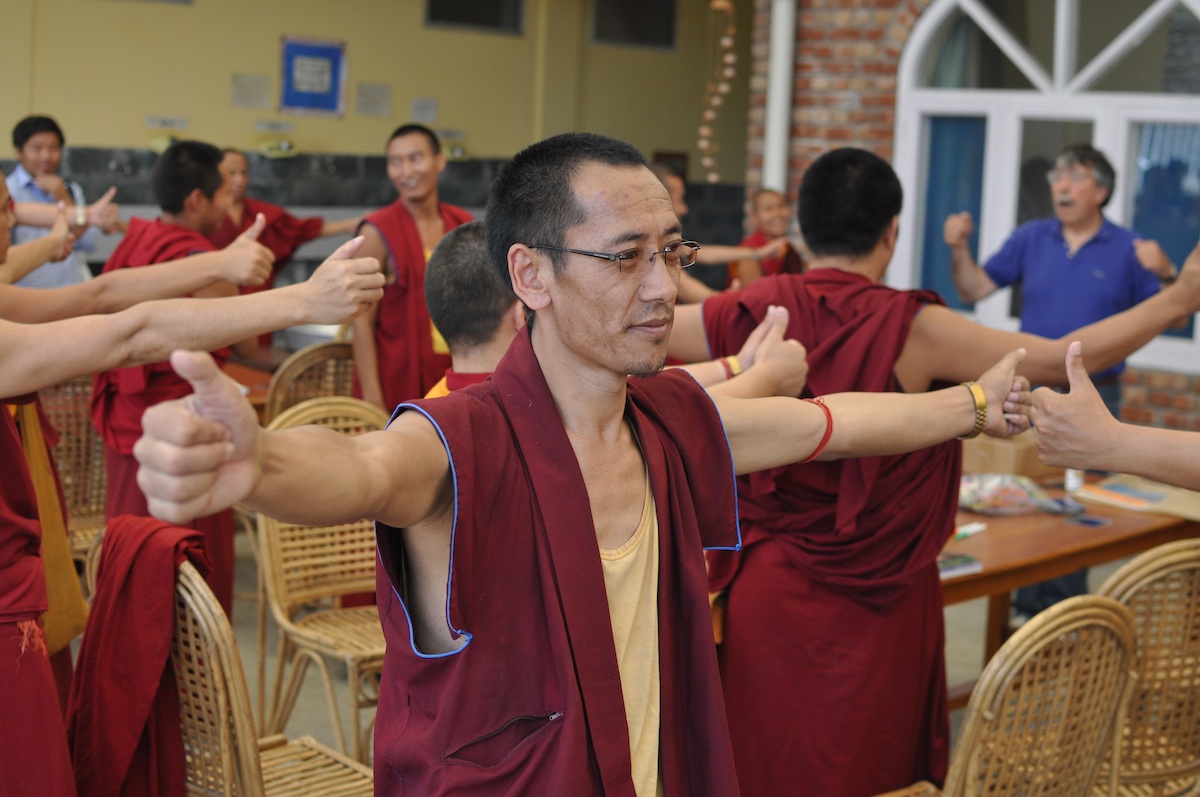
Afternoon Paul
Mirror Pairs Look at yourself in two mirrors flat on a table. Raies the outer edges like a book and raise them until you have two eyes.
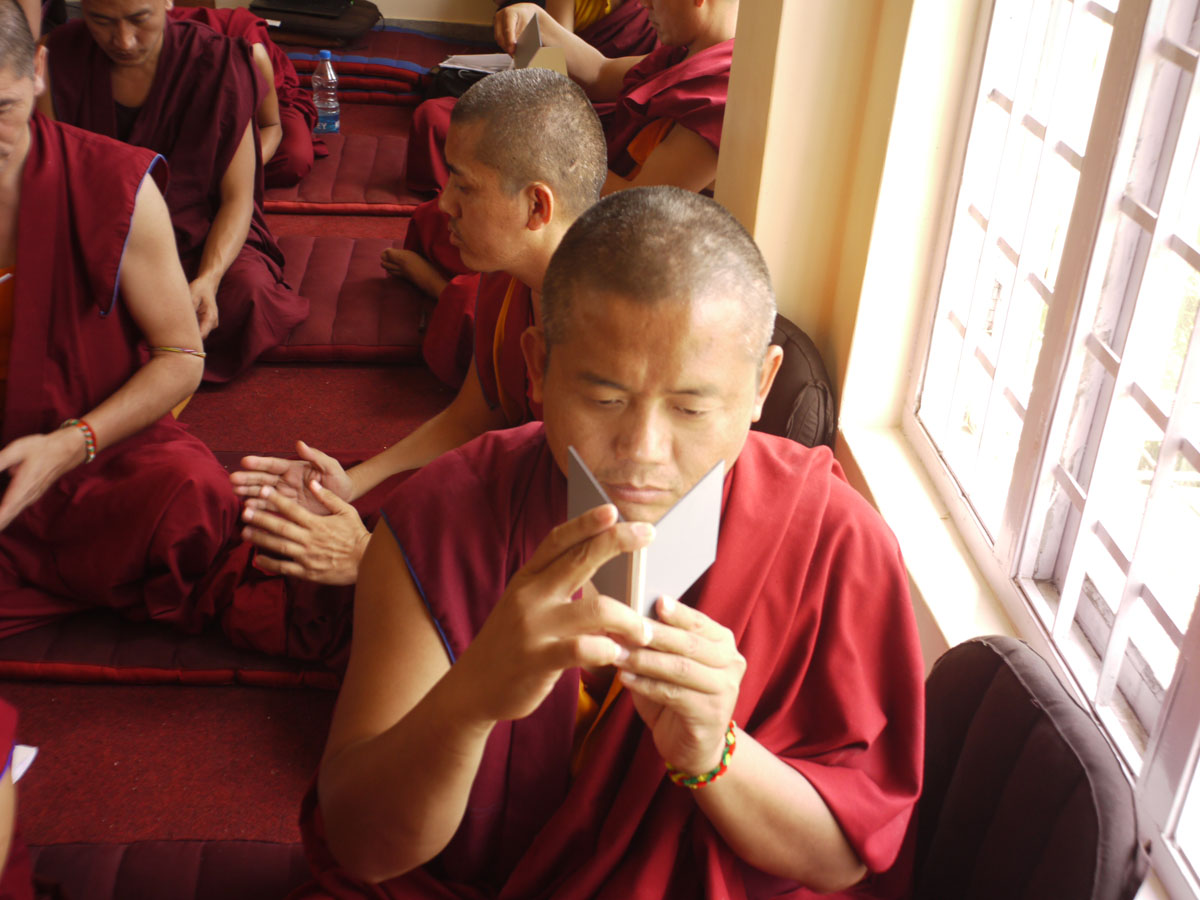
Image finding in a mirror Point at an image from two different places to see where it is in space.
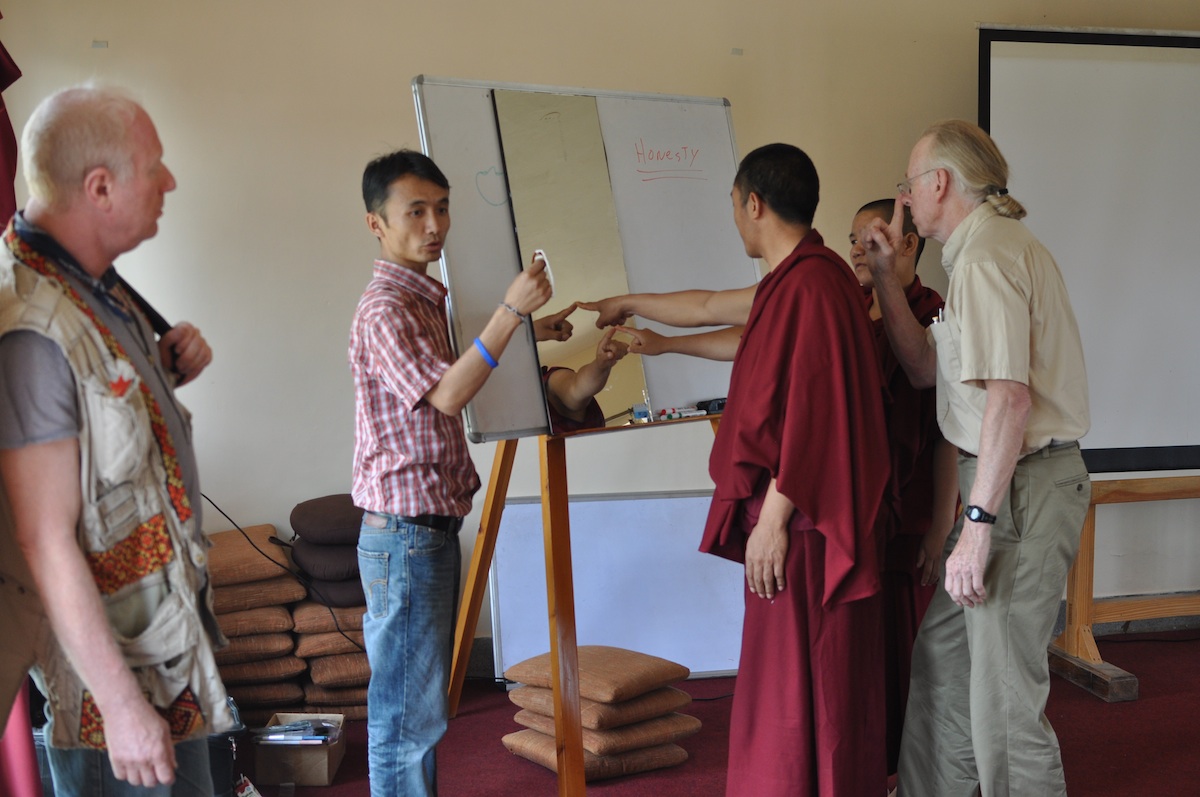
Ray Tracing Mirror Use a laser to trace the path of light reflecting off a mirror.
Scan a laser, Scan a laser pointer into a mirror and notice how the beam bounces off the mirror.
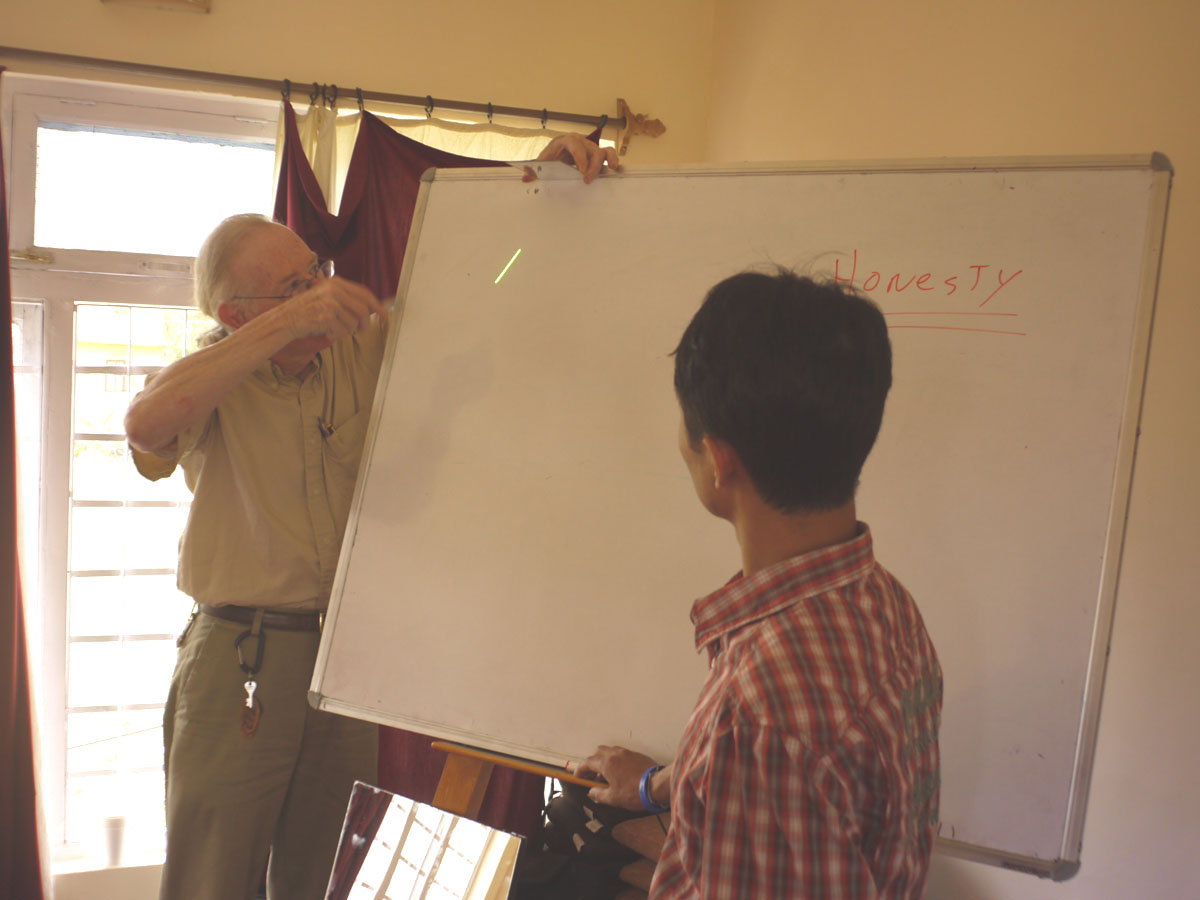
Friday
Modesto
Find the distance to an image in a mirror using an eye chart. Hold a mirror reversed eye chart on your chest then read t in a mirror. Compare the distance you can read it in the mirror to the distance you can read it in a non-reversed eye chart. In the photo the monks have playfuly taped an eye chart to the back of a nun.
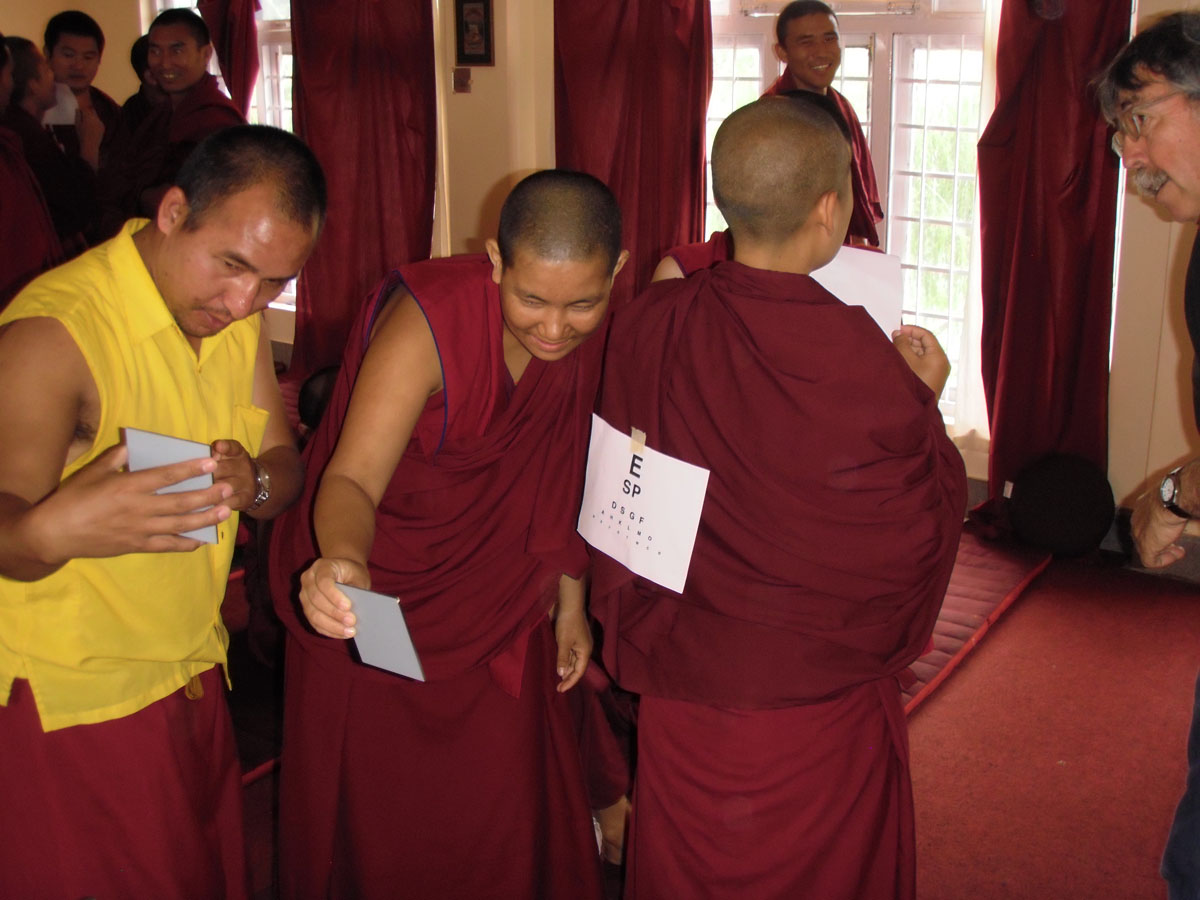
Anamorphic Art Draw images that become clear when viewed in a cylindrical mirror.
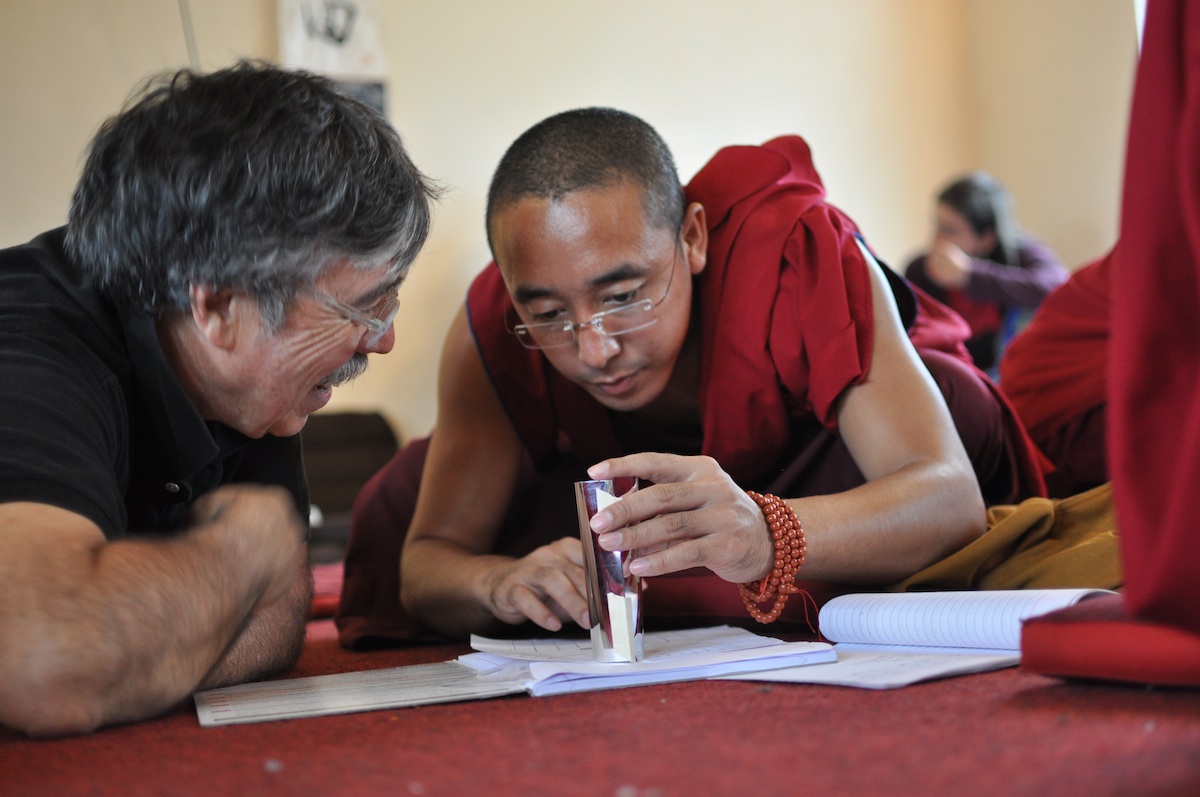
Paul
Reaction Timer Drop a ruler and catch it to measure your reaction time. Catch it with your feet to compare the time for hand versus foot.
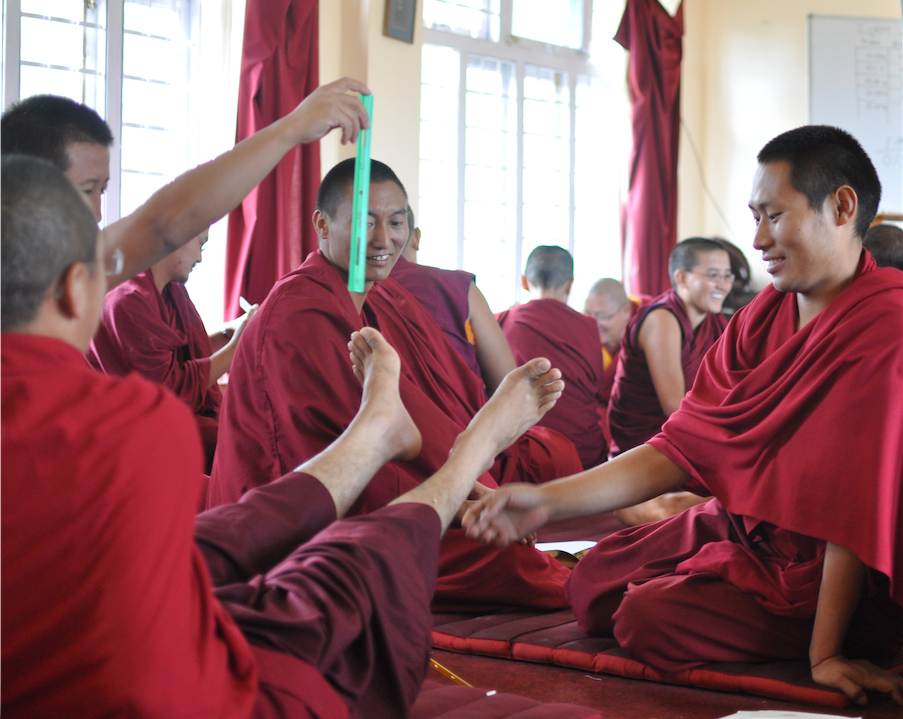
Pendulums make pendulums of different length then measure their period and frequency.
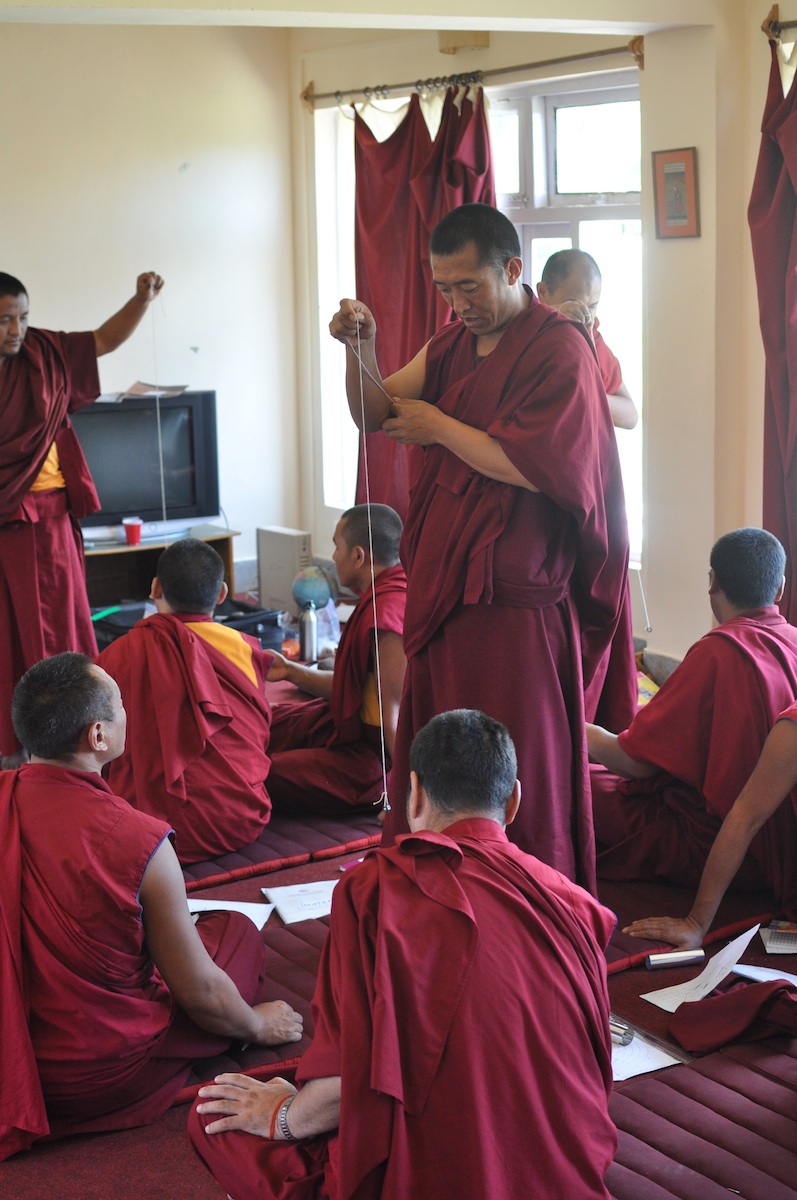
Saturday
Modesto
Sound Box Monk-o-phone, have a monk hold a music box in his teeth and play it while other monks press their ears to his skull.
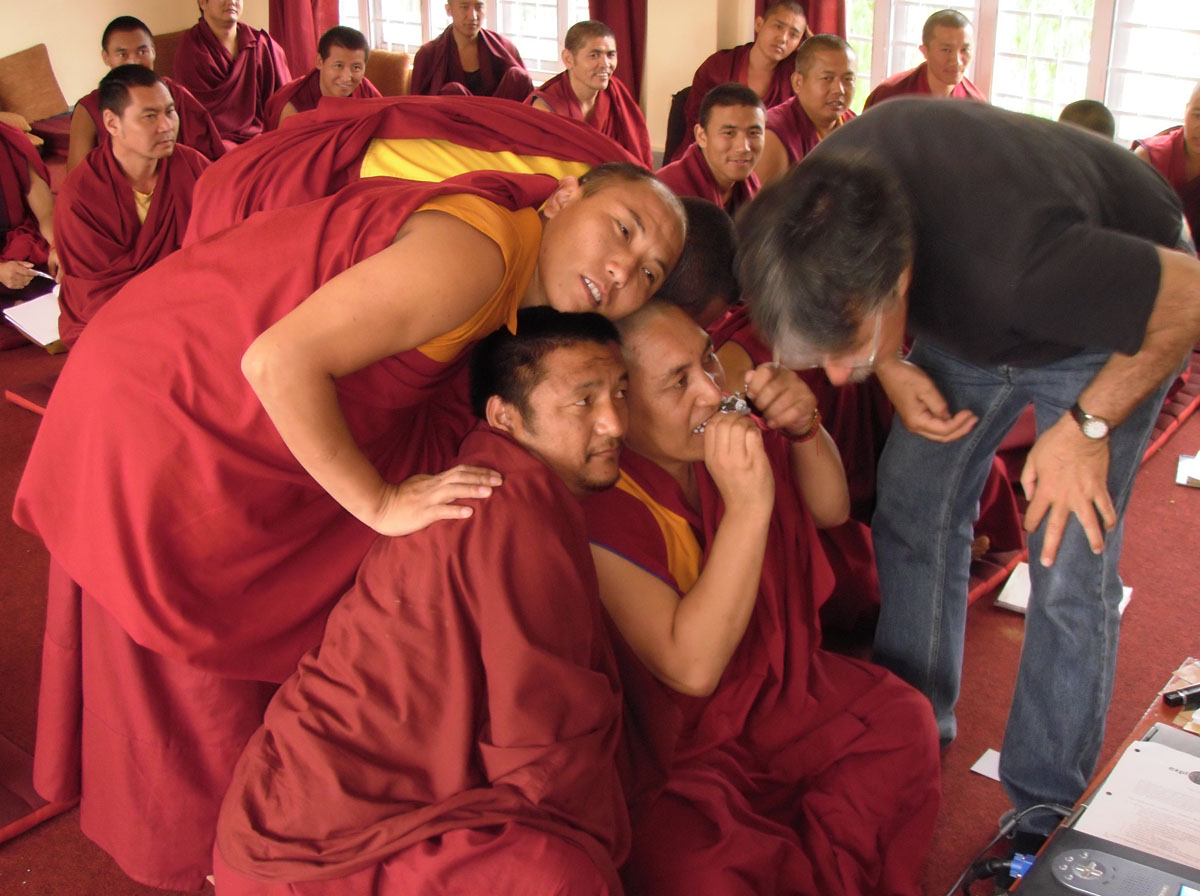
Learning Box How to make a learning box.
Paul
Explore Shadows Use a point of light to explore shadows. Make a faces/vases illusion from a human shadow profile. Fold the paper in half and face toward the fold.
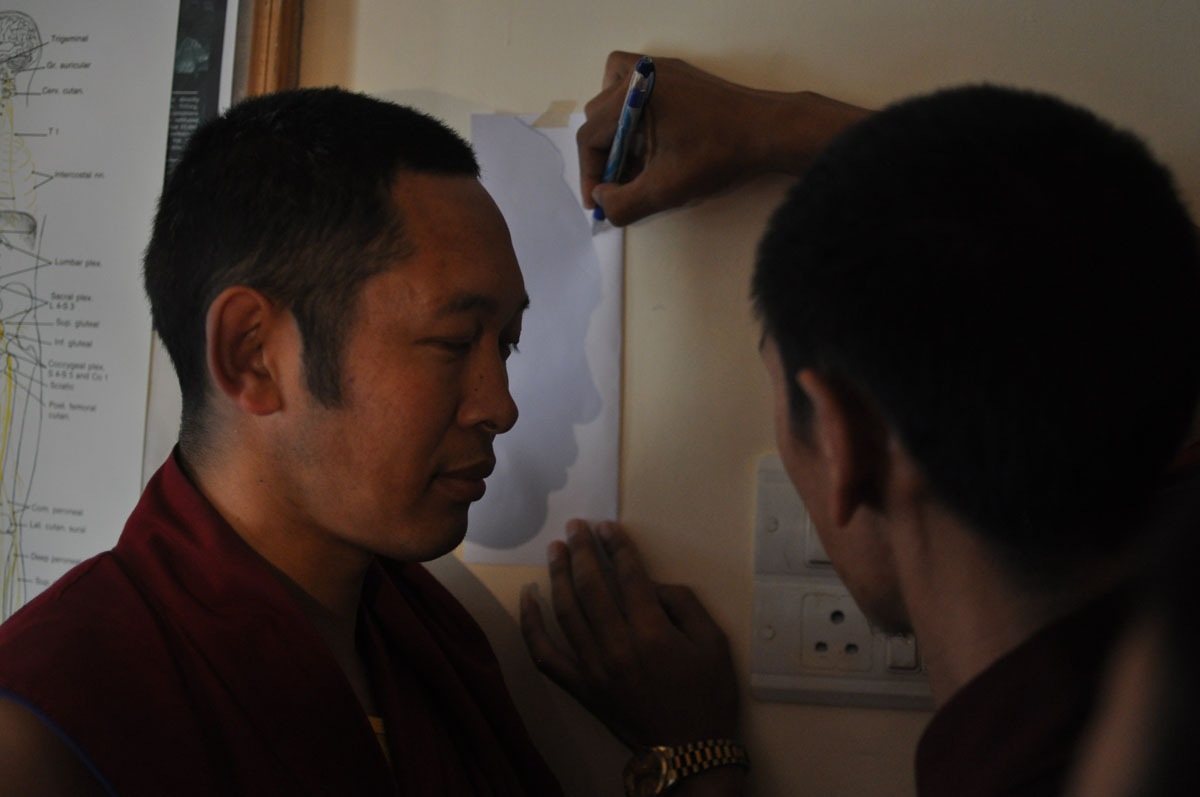
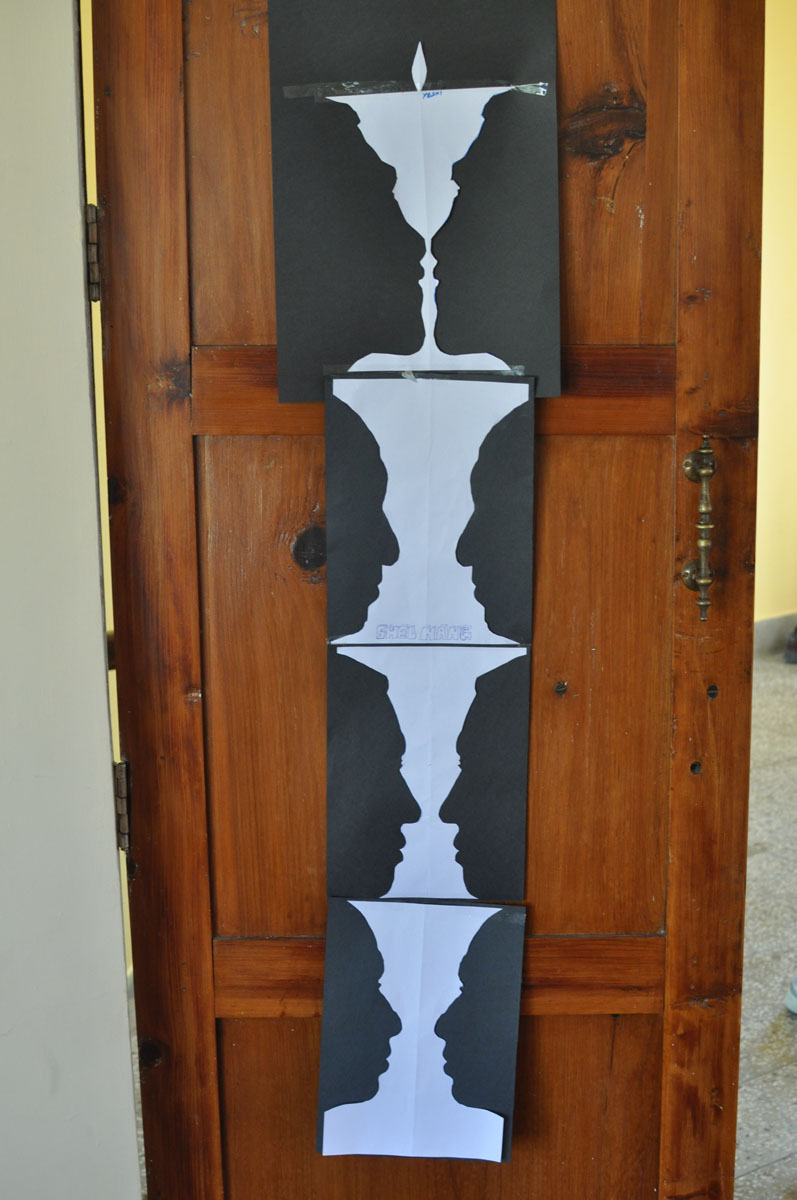
More pendulums Shorter pendulums have shorter periods and higher frequency.
Resonant Pendulum 1 Make a pendulum, move the suspension point back and forth at resonance, then at frequencies below resonance then at frequencies above resonance.